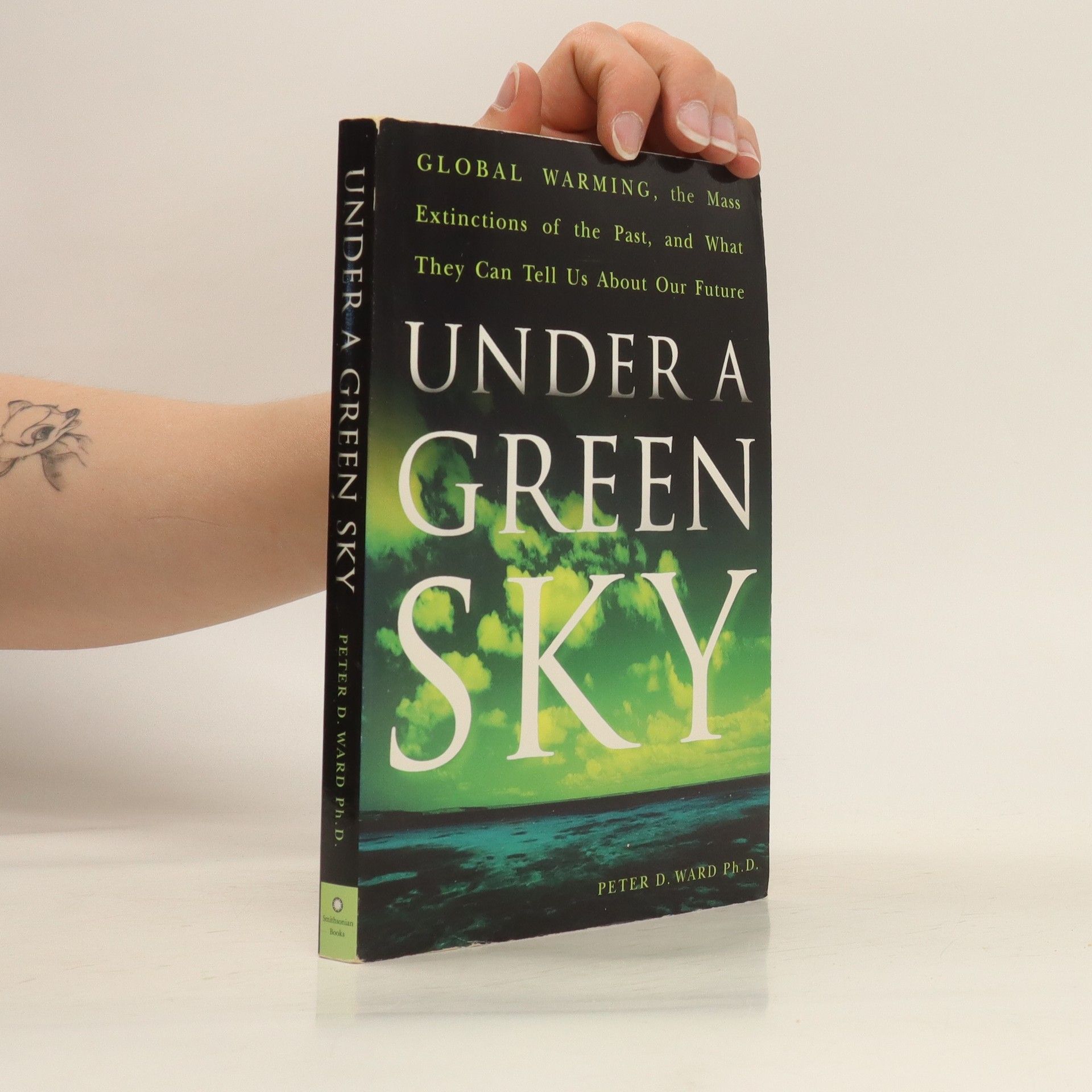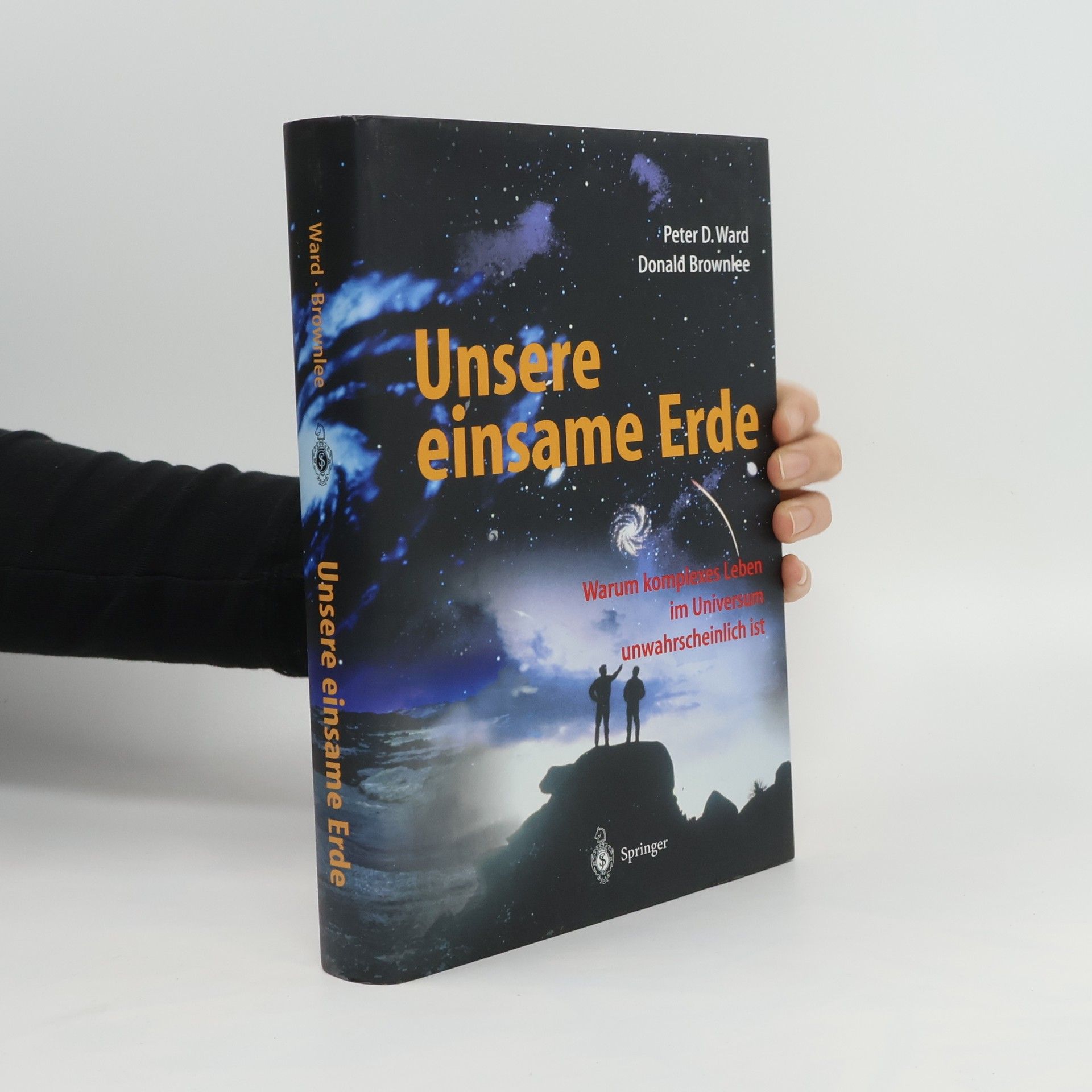Exploring the concept of the past as both a temporal and spatial entity, Peter D. Ward delves into the methodologies employed by modern scientists to reveal historical truths. He examines the significance of terrain, climate, and ancient life forms in reconstructing our understanding of Earth's history, offering insights into how these elements inform our knowledge of bygone eras.
Peter D. Ward Libros
Peter Douglas Ward es un paleontólogo y profesor estadounidense que profundiza en las extinciones masivas y la historia evolutiva de la vida en la Tierra. En sus obras de divulgación científica, explora cómo los cambios climáticos pasados moldearon las extinciones de especies, conectando estos sucesos históricos con futuras amenazas planetarias. La escritura de Ward a menudo examina la fragilidad de la vida en el universo y la rareza de la vida compleja, utilizando el registro fósil para comprender la evolución y el destino final de la Tierra.






Set against the backdrop of the last Ice Age, the narrative delves into the fascinating world of prehistoric megafauna, including saber-toothed tigers and mammoths. It investigates the causes behind their extinction, offering insights into both natural disasters and human impact. The book also provides a broader perspective on mass extinctions throughout Earth's history, highlighting significant events like the comet crash that wiped out the dinosaurs. Engagingly written, it invites readers to reflect on the fragility of life on our planet.
Under a Green Sky
- 272 páginas
- 10 horas de lectura
More than 200 million years ago, a cataclysmic event known as the Permian extinction destroyed more than 90% of all species and nearly 97% of all living things. Its origins have long been a puzzle for paleontologists, and during the 1990s and the early part of this century a great battle was fought between those who thought that death had come from above and those who thought something more complicated was at work. Paleontologist Peter D. Ward, fresh from helping prove that an asteroid had killed the dinosaurs, turned to the Permian problem, and he has come to a stunning conclusion. In his investigations of the fates of several groups of mollusks during those extinctions and others, he discovered that the near-total devastation at the end of the Permian was caused by rising levels of carbon dioxide leading to climate change. But it's not the heat (nor the humidity) that's directly responsible for the extinctions, and the story of the discovery of what is responsible makes for an fascinating, globe-spanning adventure.
The 59-Second Employee
How to Stay One Second Ahead of Your One-Minute Manager
- 116 páginas
- 5 horas de lectura
The 59-Second Employee is an employee’s response to formula management, an antidote to the quick-fix corporation. It is a little book that speaks volumes about cooperation in management and brings more control to those at the bottom of the corporate ladder. It describes how employees can use one-minute phrasing, reprimands, and goal-setting to their own advantage and how any employee can learn to ‘manage up.’ Originally published by Houghton Mifflin, The 59-Second Employee sold more than 100,000 copies and was reprinted in numerous foreign editions. It was a Publishers Weekly best-selling trade paperback.
Lamarck's Revenge
How Epigenetics Is Revolutionizing Our Understanding of Evolution's Past and Present
- 287 páginas
- 11 horas de lectura
A riveting explanation of epigenetics, offering startling insights into our inheritable traits. In the 1700s, Jean-Baptiste Lamarck first described epigenetics to explain the inheritance of acquired characteristics; however, his theory was supplanted in the 1800s by Darwin's theory of evolution by natural selection through heritable genetic mutations. But natural selection could not adequately explain how rapidly species re-diversified and repopulated after mass extinctions. Now advances in the study of DNA and RNA have resurrected epigenetics, which can create radical physical and physiological changes in subsequent generations by the simple addition of a single small molecule, thus passing along a propensity for molecules to attach in the same places in the next generation. Epigenetics is a complex process, but paleontologist and astrobiologist Peter Ward breaks it down for general readers, using the epigenetic paradigm to reexamine how the history of our species-from deep time to the outbreak of the Black Plague and into the present-has left its mark on our physiology, behavior, and intelligence. Most alarming are chapters about epigenetic changes we are undergoing now triggered by toxins, environmental pollutants, famine, poor nutrition, and overexposure to violence. Lamarck's Revenge is an eye-opening and provocative exploration of how traits are inherited, and how outside influences drive what we pass along to our progeny.
- »Eine Erdgeschichte, die so noch nie erzählt worden ist.« DER SPIEGEL Peter Ward und Joe Kirschvink, zwei der renommiertesten Forscher im Bereich der Geowissenschaften, erzählen die Geschichte des Lebens gänzlich neu: So zeigen sie beispielsweise, dass plötzliche Katastrophen eine viel größere Rolle für die Entwicklung des Lebens spielten als bisher angenommen. Was die Dinosaurier wirklich zum Verschwinden brachte und warum es einst wohl eine völlig vereiste Erde gab, zählt ebenso zu ihren neuen Erkenntnissen. Ein beeindruckender Blick auf die Evolutionsgeschichte, darauf, wie das Leben vermutlich begann, aber auch, wie seine Zukunft aussehen könnte.
Unsere einsame Erde
- 376 páginas
- 14 horas de lectura
Sind wir vielleicht allein im Universum? Die Antworten überraschen und führen den Leser auf eine faszinierende Reise von den vulkanischen Quellen des Ozeanbodens bis zum Jupiter-Mond. „. ein stellares Beispiel präziser Ausdruckskraft.“ (American Scientist)
Ausgerottet oder ausgestorben?
Warum die Mammuts die Eiszeit nicht überleben konnten
- 272 páginas
- 10 horas de lectura
Das Buch bietet eine strukturierte Übersicht über die behandelten Themen und Kapitel. Es dient als hilfreicher Leitfaden, um sich schnell im Inhalt zurechtzufinden und die wichtigsten Punkte auf einen Blick zu erfassen. Die klare Gliederung ermöglicht es dem Leser, gezielt Informationen zu suchen und den roten Faden der Argumentation oder Erzählung nachzuvollziehen.
Die große Flut
Was auf uns zukommt, wenn das Eis schmilzt. Hochwasserschutz im Klimawandel, die Ursachen, Auswirkungen und Lösungen
Anhaltende Dürren, tobende Stürme, brennende Wälder – wer glaubt, damit seien die Auswirkungen des Klimawandels aufgezählt, irrt: Das Meer wird eine der schwerwiegendsten Bedrohungen für viele Menschen sein. Noch weiß niemand genau, wie hoch das Wasser steigen wird. Doch mit dem Schmelzen der polaren Eiskappen hat ein Prozess begonnen, der immer mehr an Fahrt aufnimmt. Küstenstädte werden überflutet, Ackerland wird durch eindringendes Salz unbrauchbar. Peter D. Ward schaut auf Zeiten zurück, in denen sich die Erde erwärmt hat und die Meere angestiegen sind, und zeichnet daraus ein mögliches Bild für die Zukunft. Ein aufrüttelndes Buch und ein dringender Appell, die Erwärmung nicht über 2 Grad ansteigen zu lassen.

